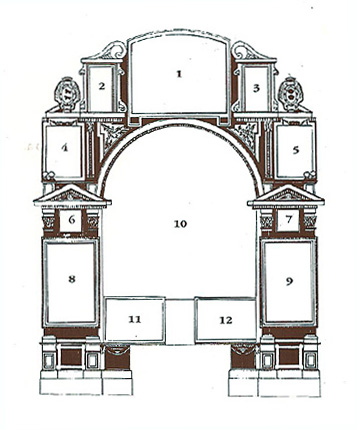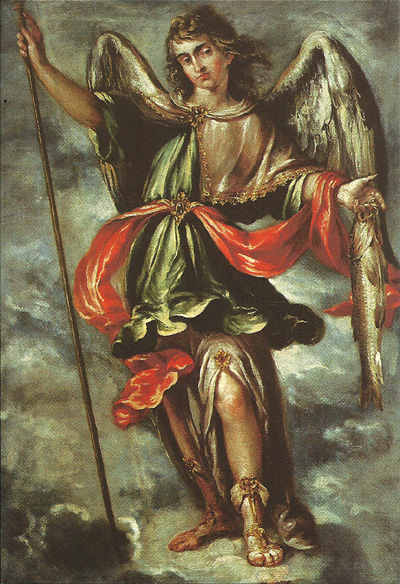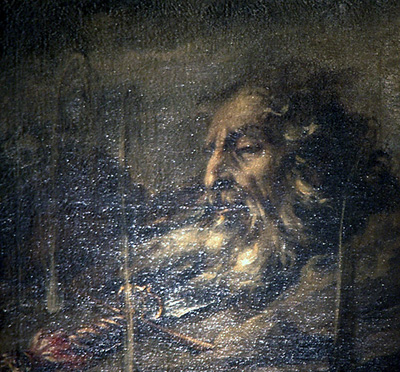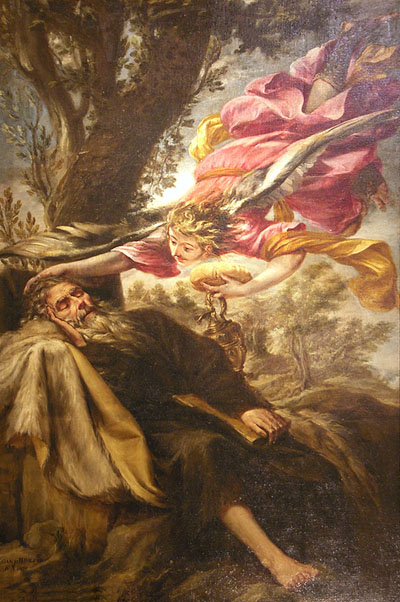|
"the culminating
moment of Spanish baroque" Examining the Art on the Right Side |
||
|
5 = St. Raphael the
Archangel |
5 = St. Raphael the Archangel
. . . 7 = Head of St. Paul
. . . 9 = Elijah's Journey to Horeb
As the two other Elian paintings that are located on the sides of the columns show that they are later works; both paintings are dated to 1658 and must have been sent from Seville where the artist lived at that time, having obtained important work in competition with Murillo and Zurbarán. Elijah with the Angel appears somewhat attached to the traditional arrangements of composition, however its technique is much more evolutionary than in the earlier paintings. The episode of Elijah and the angel occurs immediately following the execution of the prophets of Baal; from this point paintings are placed in chronological order in the altarpiece and not as was sometimes thought. It is a biblical passage with great mystical implications: Elijah, following his triumph over the powerful priests of the god Baal, comes to believe he himself is a semi-god and Yahweh makes him see the limitations of the human person, abandoning him to his own fortunes. It is when he feels himself overwhelmed by the pronouncements of Queen Jezabel that she will persue him until death, that he is finally stops. “He was afraid, he gets up and goes in order to save his life …. He walks throught he desert for a day and then sits under a broom tree. He wishes for death and he says, “Enough already, Yahweh! Take my life, because I am no better than my fathers!” He lays down and he sleeps under the broom tree but an angel touched him and says, “Get up and eat … because the journey is too long for you.” (1 Kgs 19:1-7). All the Scriptures scholars and the Fathers of antiquity see here a terrible test that God is placing on Elijah with the intention of purifying his soul and his senses before he arrives at the theophany of Horeb where he sees the Lord face to face. The mystics call this the “dark night” or the “purification of the spirit and of the senses,” an ascetical expression for that which all the great saints pass if they wish to arrive at the heights of holiness and mystical union with God. |
|



